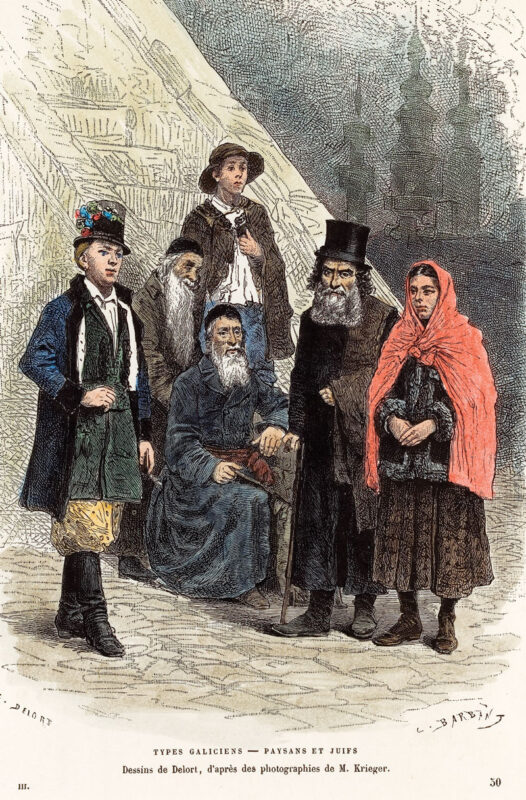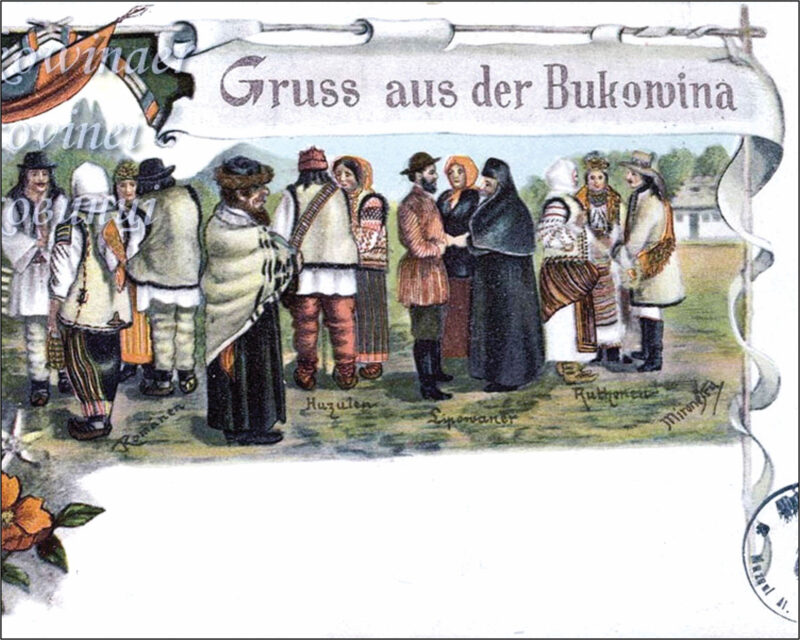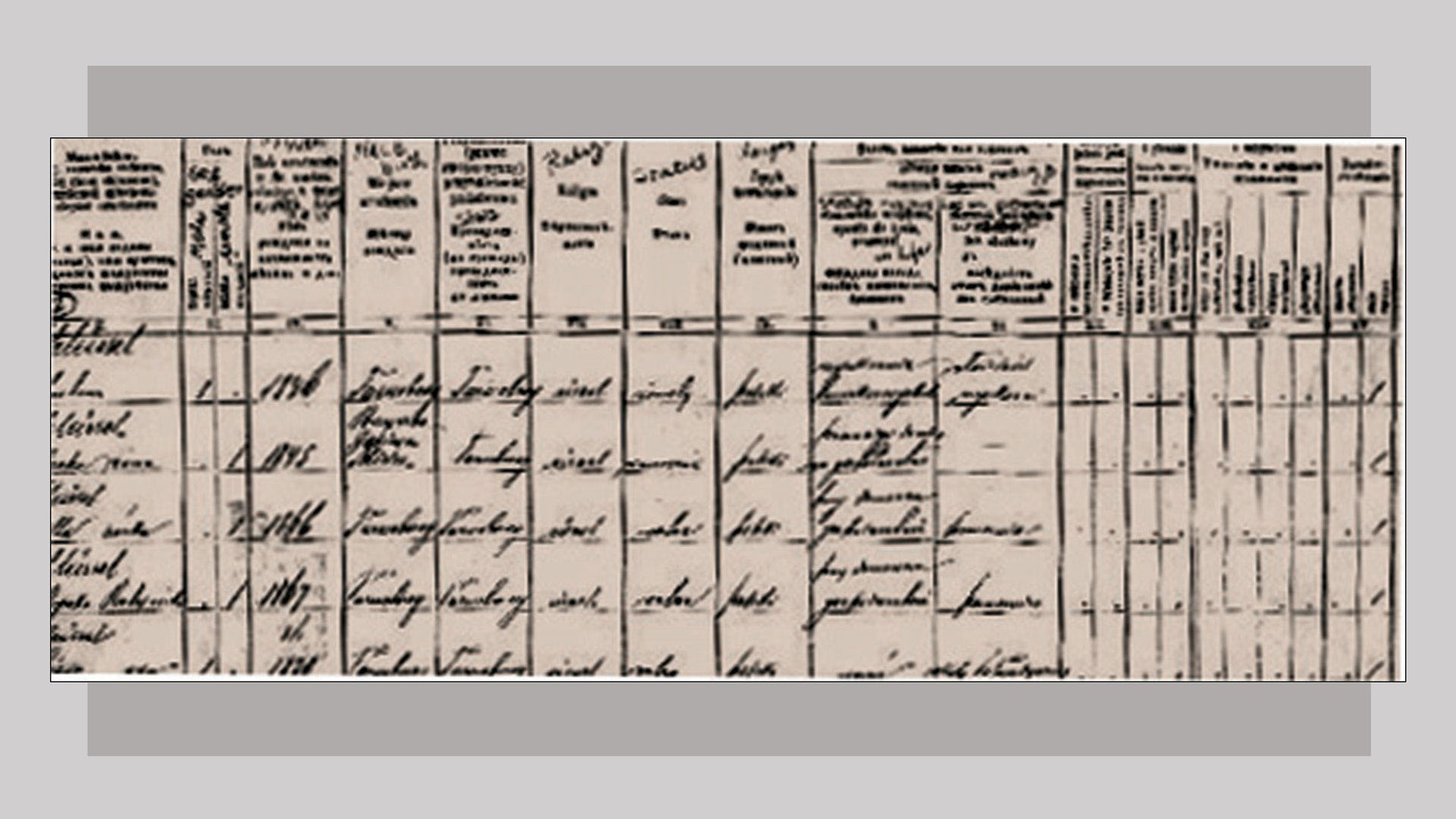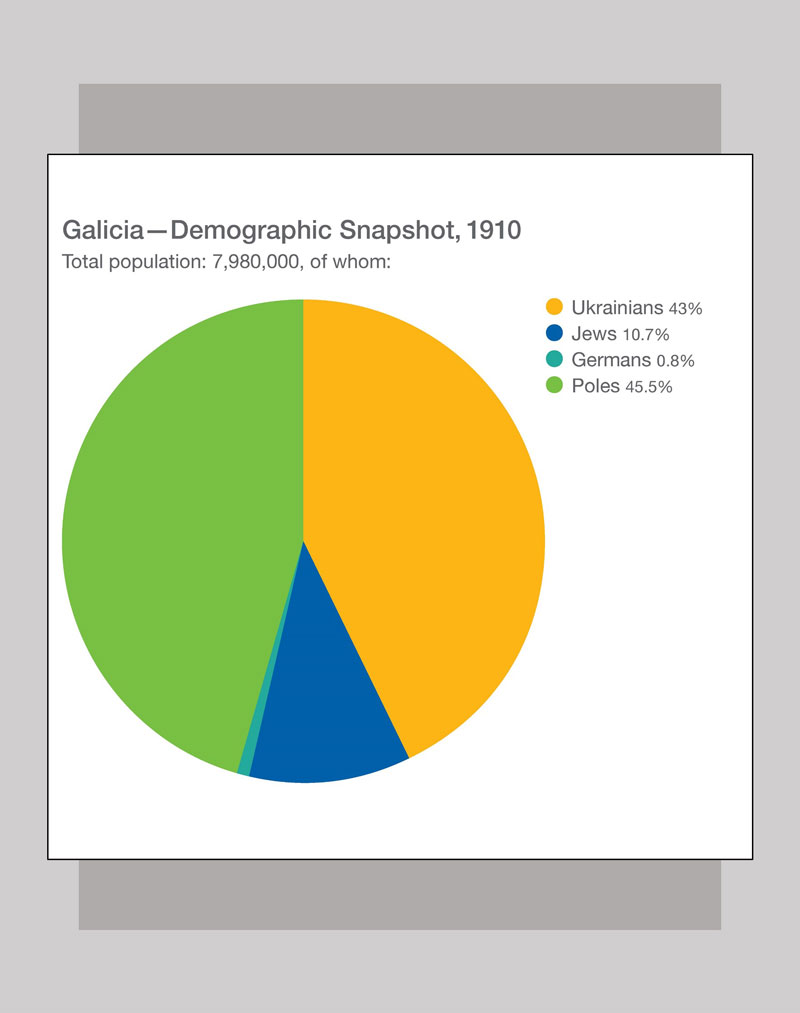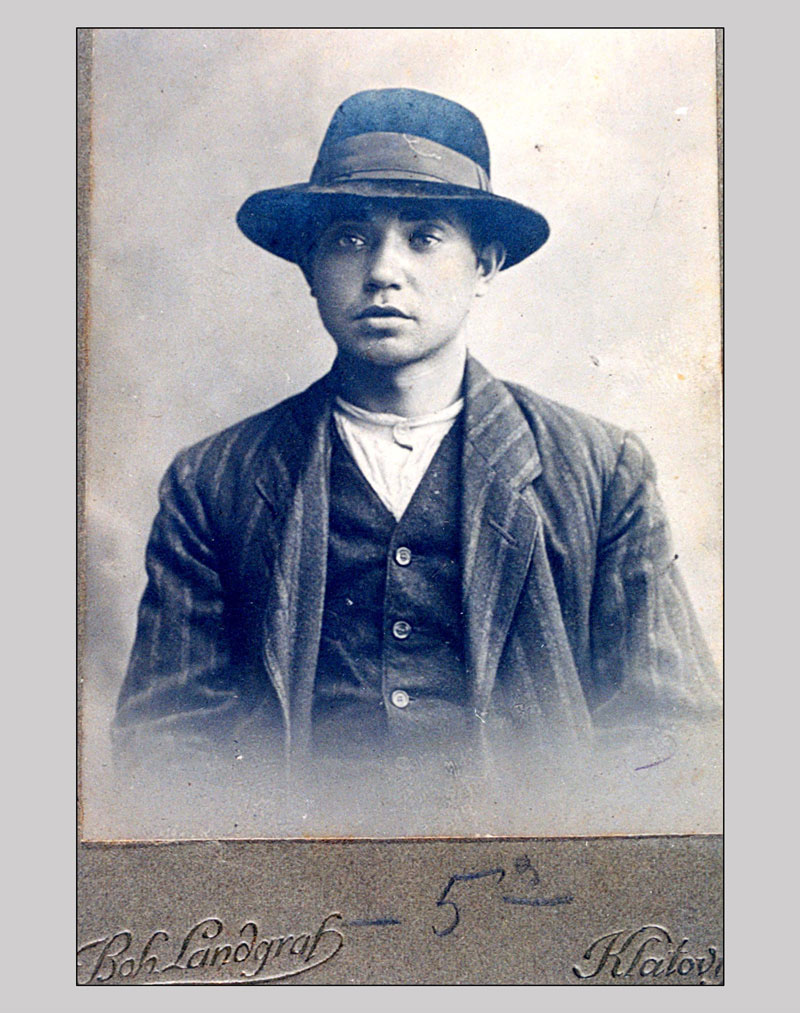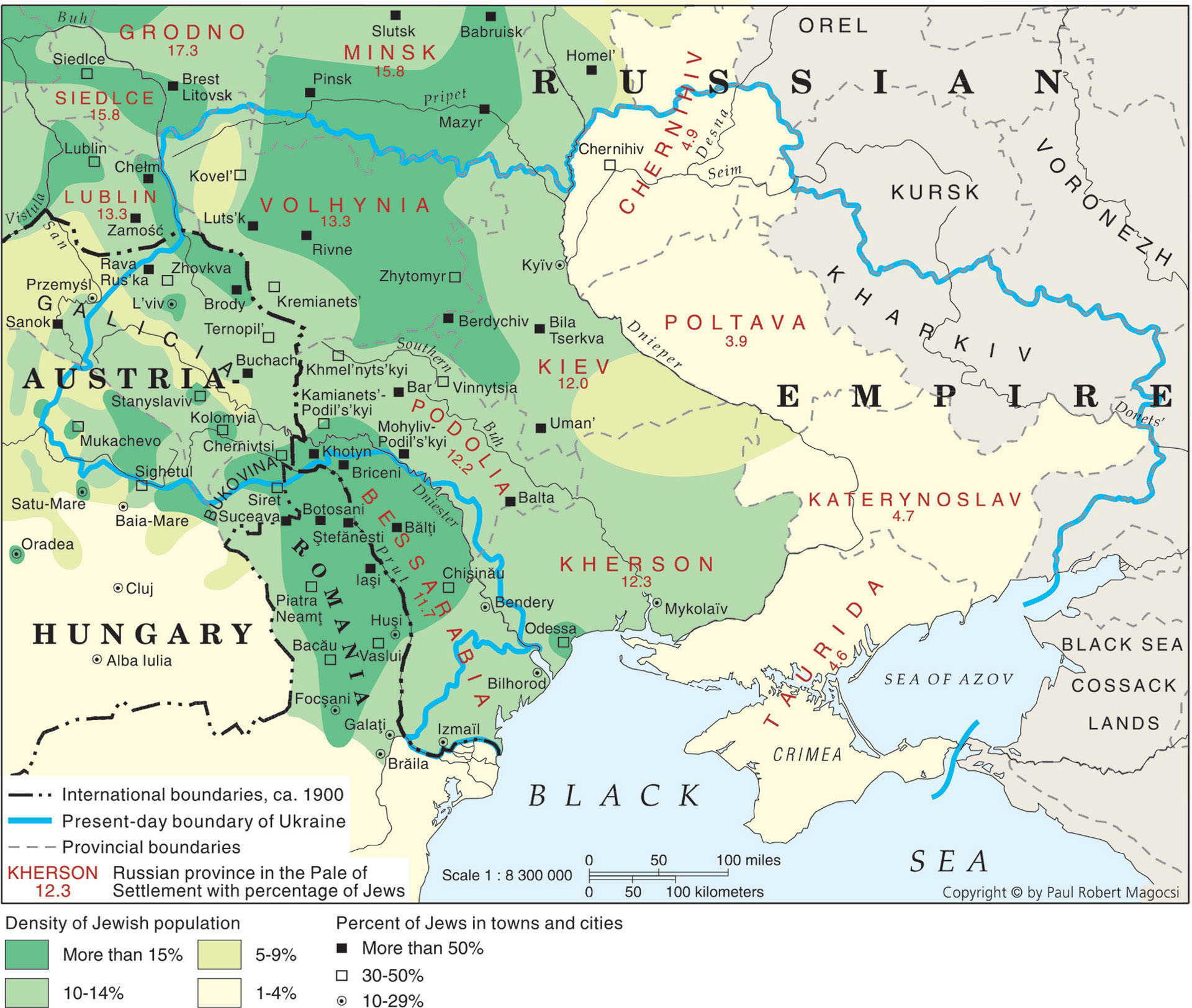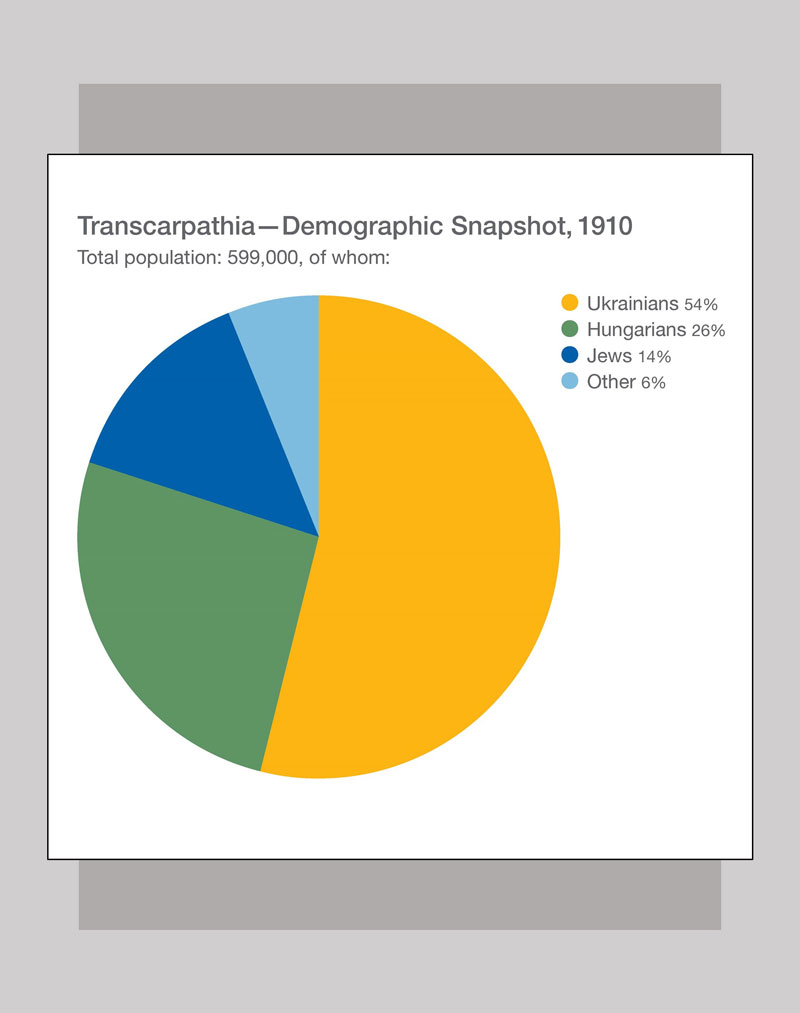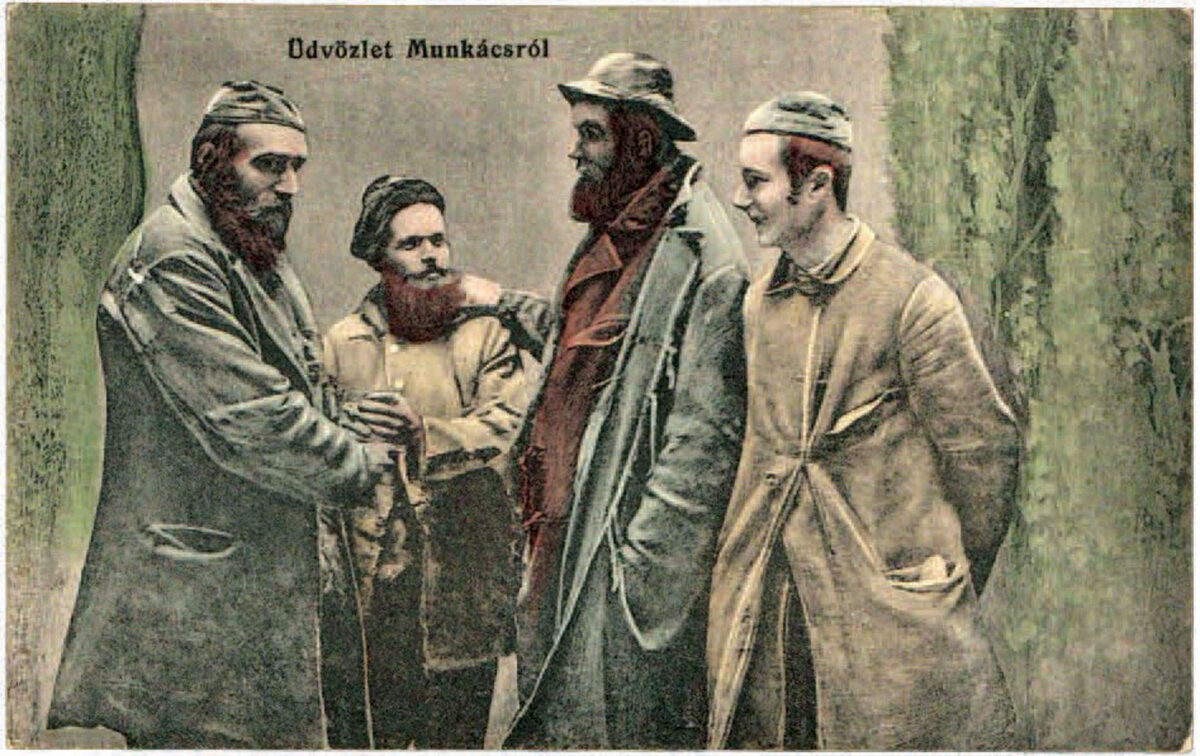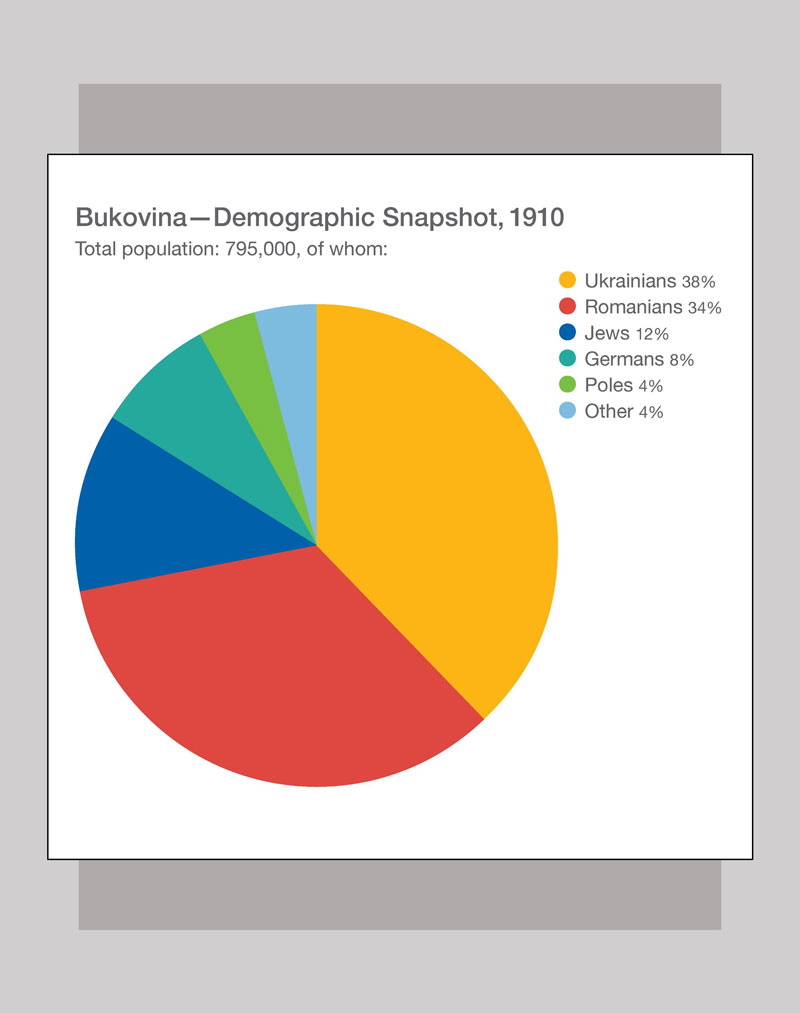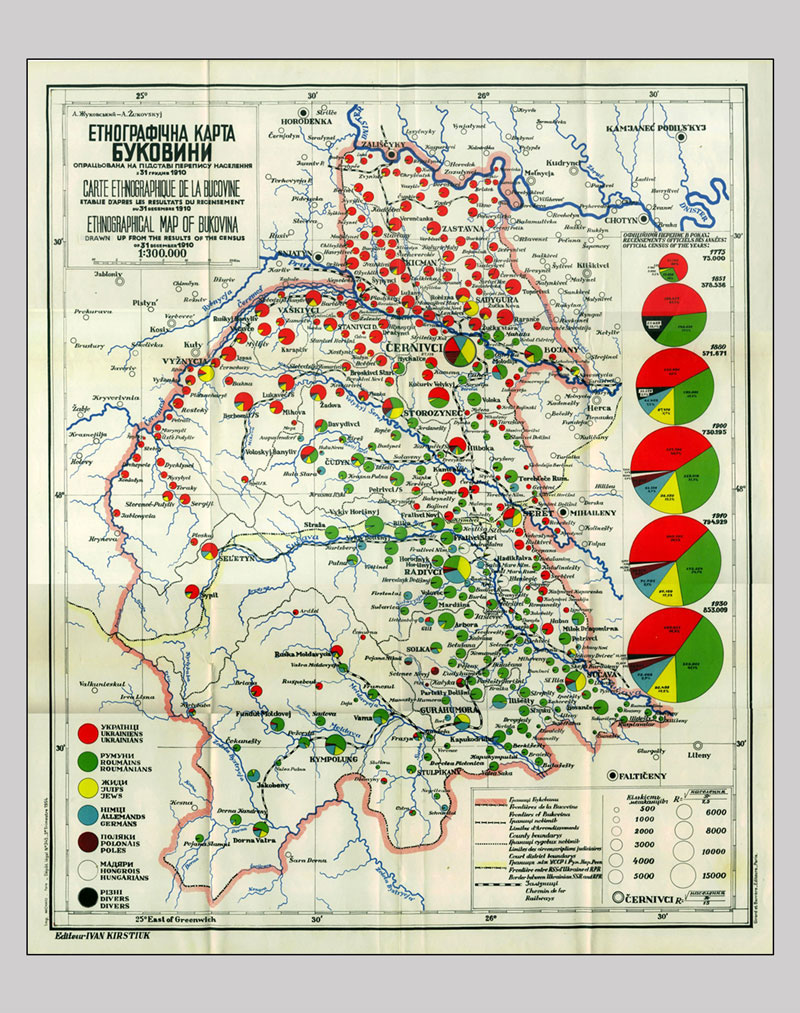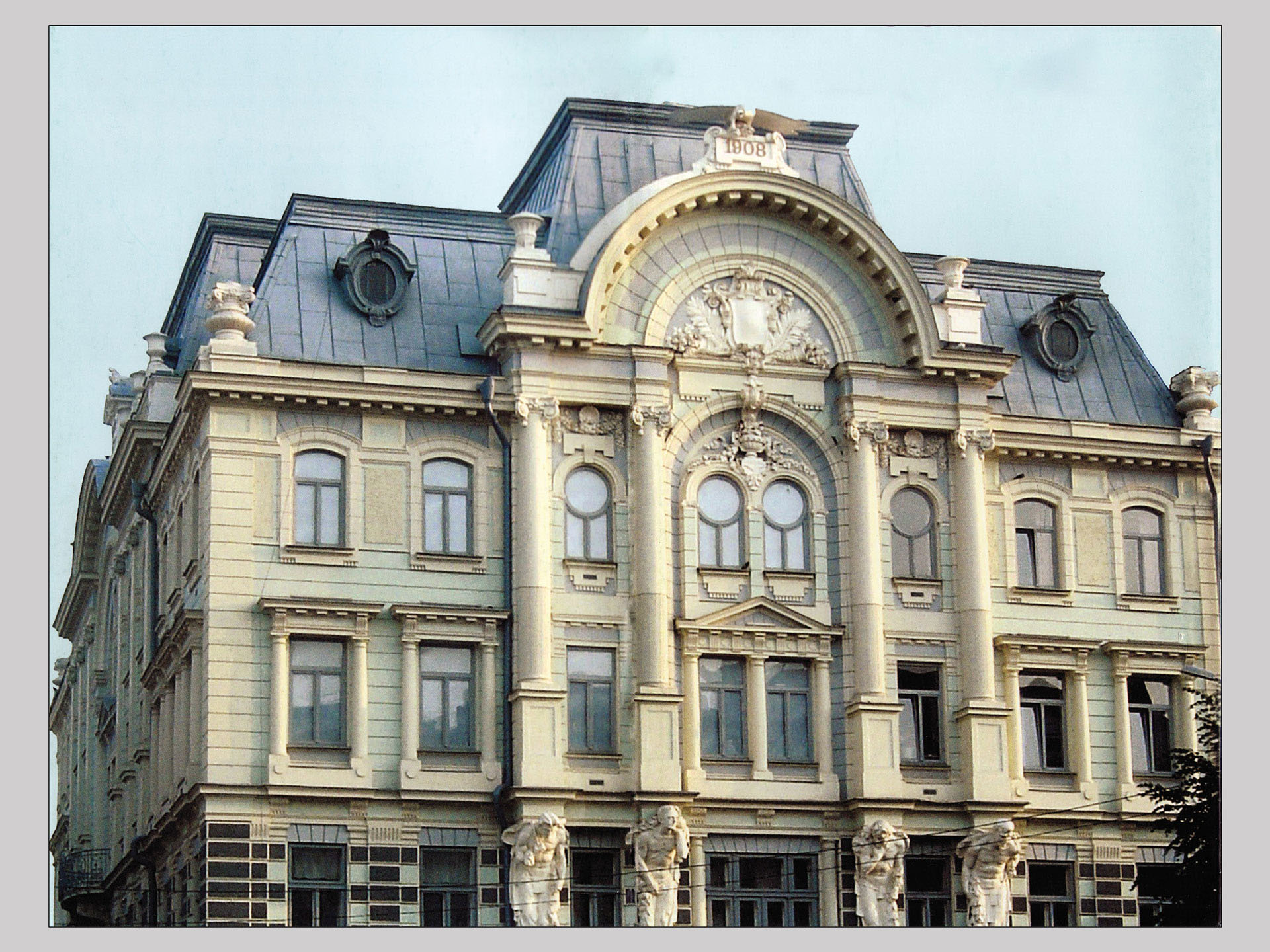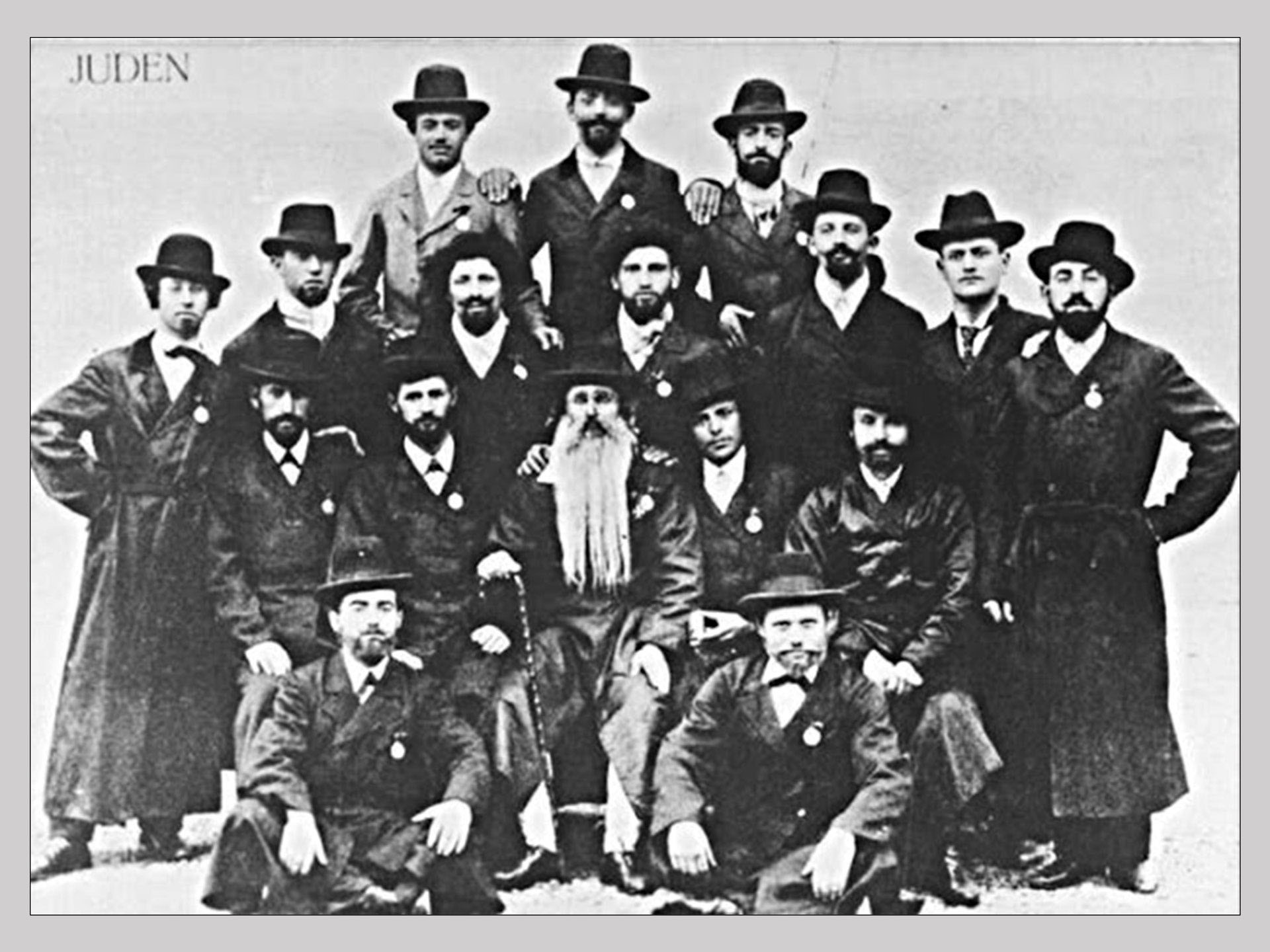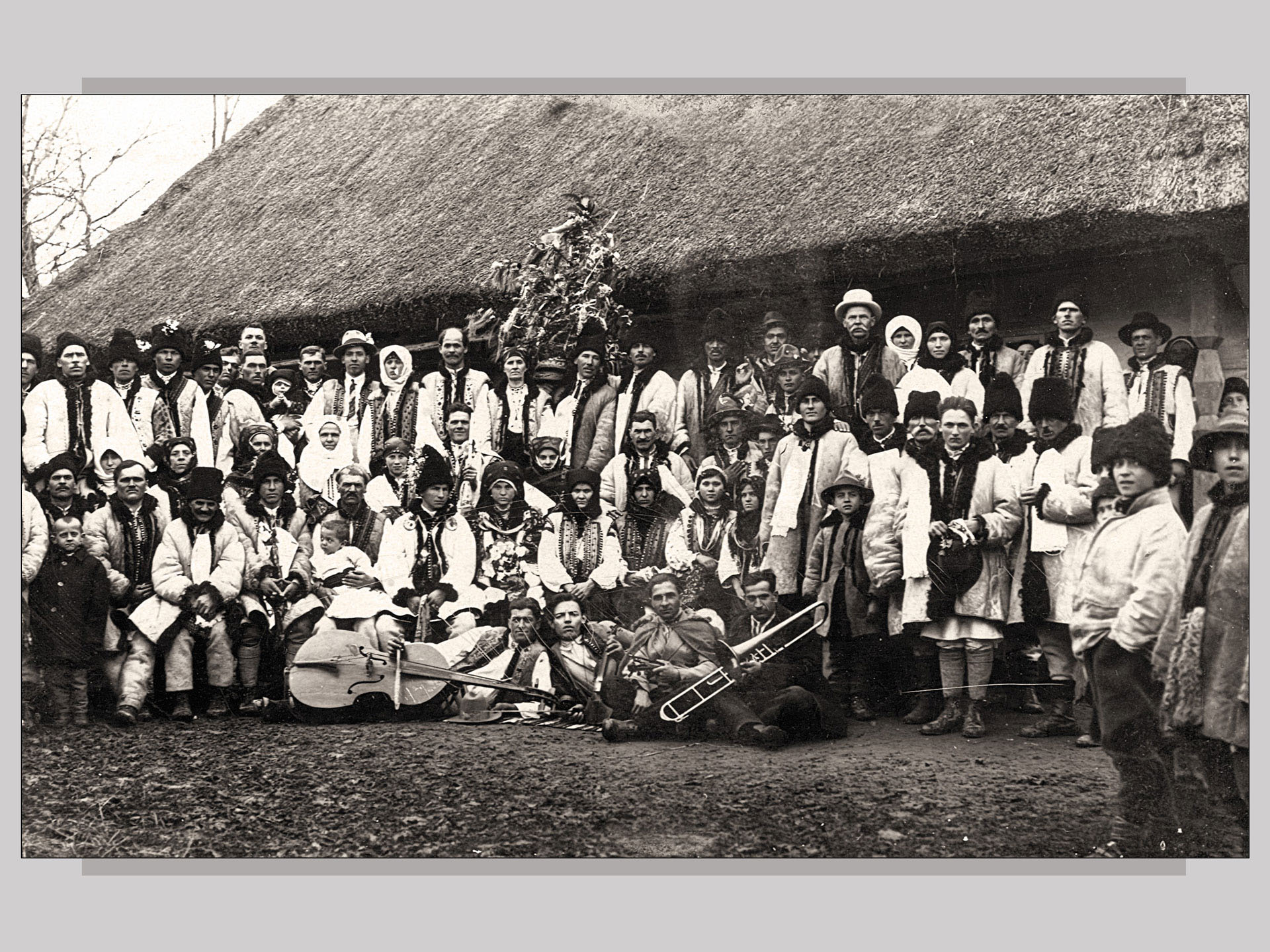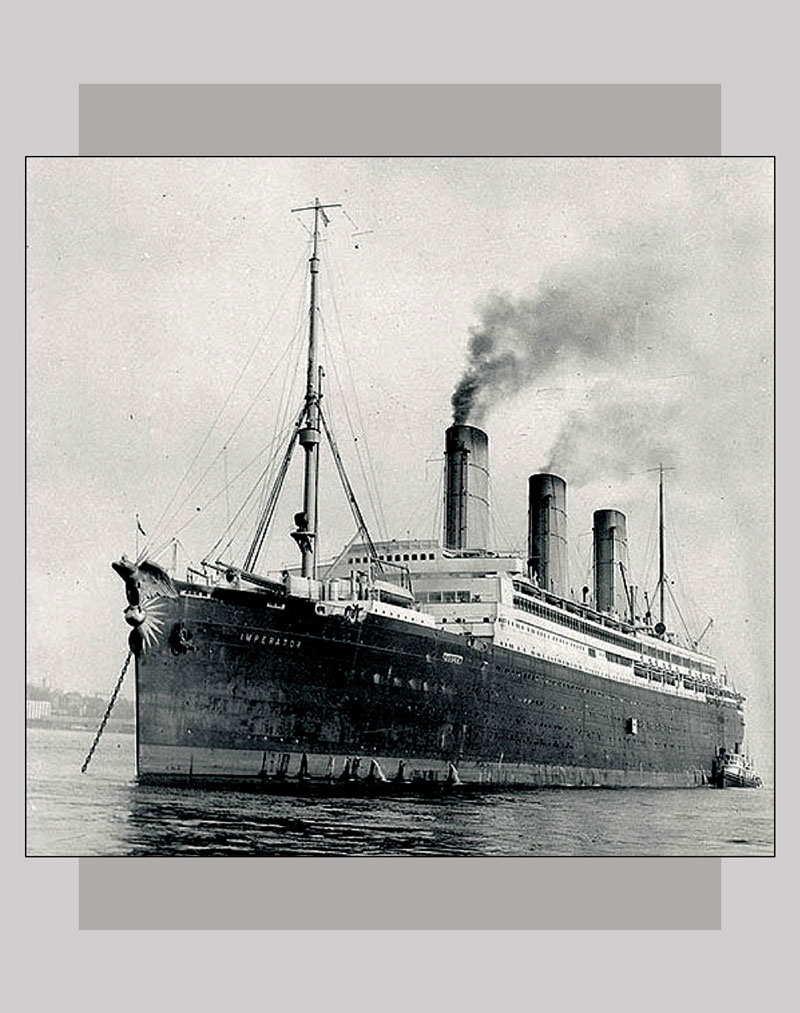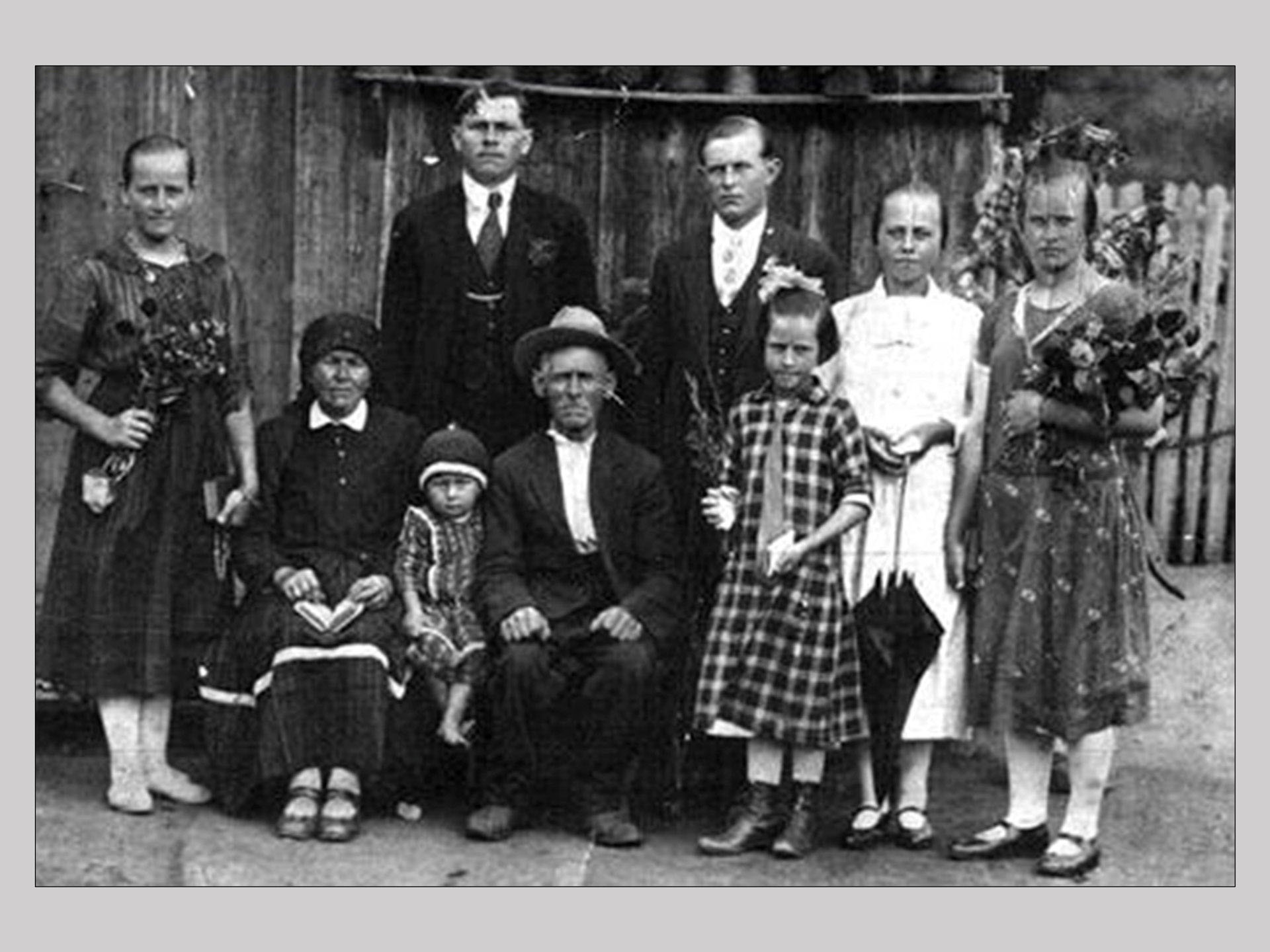1785–1849
Galicia
In 1786, Galicia's population of 2.7 million inhabitants was divided more or less evenly between Poles in the western half of the province and Ukrainians in the eastern half. Jews constituted around 3.1 percent of the province's population, but 8.7 percent of the population in the eastern part of the province.
Population of Galicia, 1849: 4.9 million
Ukrainians: 46.8 percent
Poles: 45.9 percent
Jews: 6.7 percent
Population of East Galicia, 1849: 3.1 million
Ukrainians: 71 percent
Poles: 20.4 percent
Jews: 10.5 percent
Read more...
At this time, the Jews of Galicia comprised nearly 60 percent of all Jews in the Habsburg Empire. They had limited freedom to settle in towns, and were restricted in some cities and towns to ghetto-like quarters (for example, in Lviv, Sambir, and Horodok).
General poverty in Galicia, exacerbated by the heavy tax burden imposed on the Jewish community in the early decades of Austrian rule, led to a substantial emigration to more developed parts of the Austrian Empire, mainly to Hungary and the Romanian principalities.
sources
- Paul Robert Magocsi, A History of Ukraine (Toronto, Second Edition, 2010), 415–416, 419;
- Antony Polonsky, The Jews in Poland and Russia (Oxford/Portland, 2010), vol. I, 253, 256;
- John-Paul Himka, "Dimensions of a Triangle: Polish-Ukrainian-Jewish Relations in Austrian Galicia," Polin: Studies in Polish Jewry, 12, Israel Bartal & Antony Polonsky, eds. (London/Portland, 1999), 25.
1775–1851
Bukovina
The number of inhabitants in Bukovina increased dramatically during this period. The overall population, which grew from 75,000 in 1775 to 380,000 in 1846, was more or less evenly divided between Ukrainians in the northern half and Romanians in the southern half. The number of Jews in Bukovina increased from 2,906 in 1776 to 11,581 in 1846 (3.1 percent of a total provincial population), prompted by tax exemptions and the absence of military conscription (until 1830). Of Bukovina's total population of 381,600 in 1851, 38 percent were Ukrainians (145,000), 45.8 percent Romanians (185,000), 6.8 percent Germans (26,000), and 3.1 percent Jews (12,000).
sources
- Paul Robert Magocsi, A History of Ukraine (Toronto, Second Edition, 2010), 416;
- Andrei Corbea-Hoisie, "Bucovina,” YIVO Encyclopedia of Jews in Eastern Europe (2010).
1850s–1890s
Galicia
The rural population of eastern Galicia was predominantly Ukrainian (Ruthenian), while the landowners were largely Polish and the towns primarily Polish and Jewish. In Lviv during this period, Poles were the majority population, Jews — around 30 percent, Ukrainians — around 15 percent. There was also a significant Polish or Polonized peasant population and a growing influx of Jews from towns to villages. Joseph II's legislation forbidding Jews not officially registered as farmers from living in the countryside had contributed to the exodus of Jews from villages to towns in the early nineteenth century. The emancipation of Jews in 1867, however, encouraged the re-immigration of Jews to rural areas. As one scholar observed: "Except for Bukovina, Galicia is the only land in the whole world where such a large percentage of Jews live in villages."
Read more...
In the 1850s, three-quarters of Galicia's Jews lived in the eastern half of the province, and about 60 percent resided in cities and towns. Seven towns in eastern Galicia were predominantly Jewish. Brody was the Habsburg Empire's most Jewish city, with the number of Jews ranging between 70 to 80 percent of the total population. Other predominantly Jewish towns included Belz, Buchach, Rohatyn, Peremyshliany, Deliatyn, and Sokal. In several cities — Lviv, Zhovkva, Drohobych, Stanyslaviv, Ternopil, and Kolomyia — Jews accounted for one-third or more of the inhabitants.
In the 19 East Galician cities (excluding Lviv), Jews comprised 45.6 percent of the population in 1880 (38.5 percent in 1910). In 83 East Galician towns (with populations below 12,000), Jews were 48.1 percent in 1880 (42 percent in 1910). Of these 83 towns, Jews were the majority in 59, Ukrainians in 24.
In Lviv in 1869, Jews were 31 percent of the population and Ukrainians (Greek Catholics) 14 percent. In 1900, Jews were 28 percent of Lviv’s population, Ukrainians between 15 and 19 percent. Poles were the majority in both 1869 and 1900.
sources
- Antony Polonsky, The Jews in Poland and Russia (Oxford/Portland, 2010), vol. II, 115;
- John-Paul Himka, "Ukrainian-Jewish Antagonism in the Galician Countryside During the Late Nineteenth Century," in Ukrainian-Jewish Relations in Historical Perspective, Peter Potichnyj & Howard Aster, eds. (Edmonton, 1988), 115–116;
- Paul Robert Magocsi, A History of Ukraine (Toronto, Second Edition, 2010), 420.
1900–1910
Galicia
Galicia's population increased substantially in the latter half of the nineteenth century, from 4.9 million in 1849 to 7.9 million in 1910, with a slight decline in the percentage of Ukrainians (due in part to emigration) from 47 to 43 percent. Over the same period, the number of Jews in Galicia more than doubled from 328,000 in 1849 to 856,000 in 1910 (reaching 11 percent of the province's population) as a result of the high birth rate and in-migration of refugees from pogroms in the neighbouring western provinces of the Russian Empire.
In eastern Galicia, Jews lived mostly in cities and small towns, though a significant proportion lived in the largely Ukrainian-inhabited countryside. In 1910 Lviv, 57,000 Jews comprised 27.8 percent of the city's total population; 39,314 Greek Catholic Ruthenians comprised 19.1 percent; and 105,469 Roman Catholic Poles, 51.3 percent.
By 1910, due to migration, eastern Galicia's Polish population increased to 890,000, at a time when the region's Ukrainian population was around three million.
sources
- Paul Robert Magocsi, A History of Ukraine (Toronto, Second Edition, 2010), 450, 456;
- Antony Polonsky, The Jews in Poland and Russia (Oxford/Portland, 2010), vol. II, 184;
- Roman Lozyskyi, Etnichnyi sklad naselennia Lvova (Lviv, 2005), p. 308.
1910
Transcarpathia
Transcarpathia's Ukrainians were concentrated in the northern and eastern Carpathian Mountains. The politically dominant population of Hungarians/Magyars lived exclusively in the rural areas of the southwestern lowland plain and in the small towns of Uzhhorod, Mukachevo, and Berehovo. Jews were concentrated in rural villages and towns in Hungary's Maramorosh and Bereg counties, where in some localities, they comprised nearly half of the population. The Jewish population in Transcarpathia increased to some 40,000 by 1850 and to over 80,000 by 1880. In 1910, Transcarpathia had some 128,800 Jews (14 percent of a total population of 599,000), while Ukrainians constituted 54 percent and Hungarians 26 percent.
sources
- Paul Robert Magocsi, Jews in Transcarpathia: A Brief Historical Outline (Carpatho-Rusyn Research, 2005).
1900–1910
Bukovina
The population of Bukovina almost doubled in six decades, increasing from 447,000 in 1852 to 795,000 in 1910. The province's population included Ukrainians (38 percent), Romanians (34 percent), Jews (12 percent), Germans (8 percent), and Poles (4 percent).
In the northern half of the province, Ruthenians/Ukrainians resided mainly in the rural areas and traditionally constituted the majority (58 percent) of the total population, followed by Romanians (17 percent), Jews (15 percent), Germans (6 percent), and Poles (5 percent).
In Chernivtsi, Jews comprised 34 percent of the total population of 85,000; Ukrainians, 17–19 percent; Romanians, 16 percent; Poles, 17 percent; Germans, 15 percent.
sources
- Paul Robert Magocsi, A History of Ukraine (Toronto, Second Edition, 2010), 483–484;
- Andrei Corbea-Hoisie, "Bucovina," YIVO Encyclopedia of Jews in Eastern Europe (2010);
- Entsyklopediia istorii Ukrainy.
1880s–1910
Limited economic opportunities motivated both Jews and Ukrainians to emigrate en masse from Galicia, at first to Transcarpathia (eastern Slovakia) and Vienna, and then to North America.
More than two million Jews migrated to North America from Eastern Europe during this period. 237,000 Jewish “Galitsiyaner” (173,000 of whom were from eastern Galicia) arrived in the northeastern United States between 1881 and 1910. Other destinations included Canada, Western Europe, Palestine, Latin America, and southern Africa. The Jewish immigrants in North America and elsewhere soon established religious and communal organizations, including Landsmanschaft societies, that brought together immigrants from specific towns or regions in the old country.
An estimated 430,000 ethnic Ukrainians from Galicia and Bukovina, and another 170,000 from Transcarpathia emigrated to North America. Most headed for the industrial regions of the northeastern United States and the Canadian Prairies.
Read more...
Around 170,000 Ukrainians settled in Canada during this period (beginning in the 1890s), attracted by the Canadian government's offer of homestead allotments in the Prairie provinces. By 1914, some 600,000 Ukrainian immigrants, determined to maintain their Ukrainian heritage, established distinct community structures in North America, including a range of secular and religious, cultural, and benevolent organizations. They also maintained an ongoing and active interest in developments in the European homeland.
Many Ukrainians also migrated to Brazil and Argentina. In Brazil, the first wave in 1895–1897 brought over 20,000 Ukrainians, mostly small farmers and landless peasants. Another influx of 15,000–25,000 came in 1907–1914 in response to the Brazilian government’s call for railway construction workers. The most substantial influx of Ukrainian immigrants to Argentina during this period occurred between 1900 and 1903; by the First World War, the newcomers and their descendants numbered around 10,000.
sources
- Paul Robert Magocsi, A History of Ukraine (Toronto, Second Edition, 2010), 452–453, 458–459, 464;
- "Brazil" and "Argentina," Internet Encyclopedia of Ukraine.

